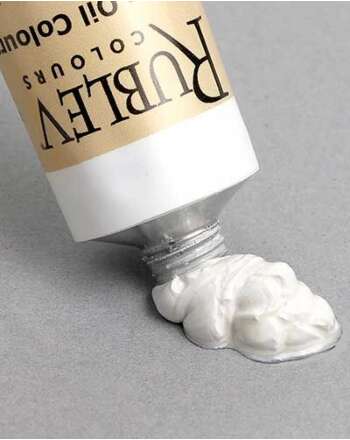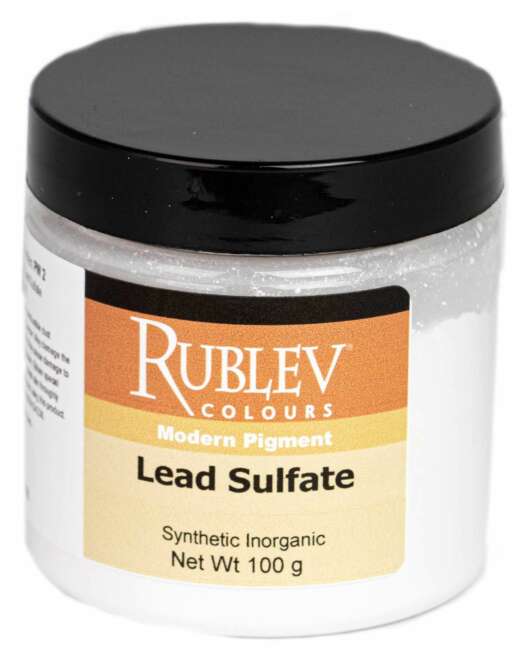
Introduction to Oil Paint Drying and Mechanical Properties
Oil painting, a revered medium in art, relies heavily on the chemical properties of the paints used. Artists often select materials based on their interaction over time, affecting their work's creative process and longevity. A recent study, "The Changing Mechanical Properties of Aging Oil Paints," offers valuable insights into how traditional oil paints, specifically those made with lead white (basic lead carbonate), change mechanically over extended periods without modern additives.
Oxygen Uptake and Drying Times
Initially, oil paints absorb oxygen, a process integral to drying. This uptake results in a weight gain measurable in the early drying stages, providing a practical way to monitor this aspect. For example, paints made with lead carbonate and various oils like linseed and walnut display distinct drying timelines, each reaching a "dry-to-the-touch" state at different times. This state indicates when the surface stops absorbing oxygen, significantly slowing the internal drying processes.
Flexibility and Longevity of Lead White Paints
Lead white paints, known for their historical use and lack of modern additives, exhibit interesting mechanical behaviors. Over time, such as the 14.25 years studied, these paints not only retain considerable flexibility but also show increasing strength. This continuous strengthening suggests ongoing chemical processes that contribute to the paint's mechanical properties, making lead white a durable choice for artists seeking longevity in their work.
Analysis of Lead White Paints in Varied Environments
To deepen our understanding, let's examine the mechanical behavior of lead white paints when bound with different types of linseed oil and subjected to various environmental conditions. These insights are crucial for artists who need their works to withstand the test of time under different climatic conditions.

Figures 5a and 5b from the article show stress versus strain plots of lead white oil paint in cold-pressed and alkali-refined linseed oil.
Impact of Linseed Oil Types on Paint Flexibility
Figure 5a illustrates the stress versus strain characteristics of lead carbonate paint made with cold-pressed linseed oil. The tests were conducted under three distinct environmental conditions: a moderate 48% relative humidity (RH) and 23°C (73 °F), a low 10% RH at the same temperature, and a colder environment at -10°C (14 °F) with 46% RH. Notably, while a reduction in humidity increased the stiffness and strength of the paint, it was the exposure to low temperatures that markedly increased its brittleness, demonstrating the vulnerability of this oil paint composition to colder climates.
Enhancing Flexibility with Alkali-Refined Linseed Oil
Contrastingly, Figure 5b details the behavior of the same lead carbonate paint formulated with alkali-refined linseed oil, tested in identical environmental conditions. Here, the influence of lower humidity on increasing stiffness and strength was similarly observed but was less pronounced compared to the cold-pressed oil. However, low temperatures led to significant brittleness similar to the cold-pressed variant.
This comparative analysis highlights a critical point: alkali-refined linseed oil, widely used in the production of today's artists, tends to maintain better flexibility under varying humidity levels than its cold-pressed counterpart. This characteristic makes it preferable for artists looking for more durable and stable paint properties, especially in fluctuating environmental conditions.
These findings underscore the importance of choosing the right type of oil binder in oil paints, as it significantly influences the mechanical properties and, consequently, the longevity of the artwork. Alkali-refined linseed oil, with its enhanced flexibility properties, emerges as a robust medium for artists who require their creations to endure over time while exposed to diverse climatic conditions.
Impact of Environmental Conditions
The study highlights the significant effects of environmental conditions like temperature and humidity on oil paints. Low temperatures, for instance, can drastically increase brittleness, leading to cracking. Conversely, while low humidity does stiffen lead white paints, the impact is notably less severe compared to temperature changes. These findings are crucial for artists and conservators in managing the preservation conditions of artworks.
Exploring the Effects of Elevated Temperatures on Oil Paint Flexibility
Understanding how different oils impact the flexibility of oil paints under elevated temperatures is crucial for artists who seek to manage the long-term behavior of their works. The study focuses on titanium white paints mixed with zinc oxide and bound with either alkali-refined linseed oil or alkali-refined safflower oil, which have shed light on this topic, particularly under conditions mimicking those in an uncontrolled attic environment.

Figures 7a and 7b show stress versus strain plots of commercially made titanium white paint made with alkali-refined linseed oil and alkali-refined safflower oil.
The Role of Linseed Oil at High Temperatures
Titanium white ground in alkali-refined linseed oil demonstrates a notable reaction to sustained high temperatures of 50°C (122°F). Initially, as shown in Figure 7a, the paint exhibits an increase in stiffness when exposed to this heat. However, a fascinating stabilization occurs after about 160 days—the stiffness ceases to increase, maintaining the same mechanical properties even up to 300 days. Despite prolonged exposure to high temperatures, this paint composition retains significant flexibility. This behavior suggests that while linseed oil facilitates initial stiffening due to heat, it stabilizes the paint, preventing further hardening over time.
Comparing the Effects of Safflower Oil
In contrast, titanium white ground in alkali-refined safflower oil, as depicted in Figure 7b, responds differently under the same elevated temperatures. This variant continues to stiffen progressively throughout the duration of the heat exposure. The results clearly indicate that the longer the paint remains exposed to 50°C, the more pronounced the increase in stiffness. This ongoing stiffening points to the differences in how safflower oil interacts with the paint constituents, particularly in how it manages heat-induced reactions over time.
Understanding the Chemical Dynamics
Oil paints stiffen at elevated temperatures largely due to the volatilization of unreacted fatty acids, which act as plasticizers within the paint matrix. The loss of these acids due to heat exposure reduces the paint's ability to remain flexible, resulting in a stiffer, more brittle film. This process is compounded in safflower oil, possibly due to its unique fatty acid composition, which may be more susceptible to heat-induced changes compared to linseed oil.
Practical Implications for Artists
These insights are invaluable for artists. Knowing how different binding oils react under heat can guide decisions regarding the choice of materials, especially for artworks that might be exposed to fluctuating or high temperatures. Choosing between linseed and safflower oil could impact the artwork's aging process, influencing its durability and appearance over time.
These findings enrich an artist's material knowledge and highlight the importance of considering environmental conditions in the preservation of oil paintings. By choosing the appropriate oil, artists can better control their work's longevity and aesthetic quality in the face of environmental challenges.
Why Artists Should Care
For artists, understanding the interaction between paint composition, environmental factors, and aging can inform both material choices and storage conditions. With their enduring flexibility and response to environmental changes, lead white paints offer a reliable medium for works that stand the test of time. This study reminds us of the complex interplay between art materials and their surroundings, underlining the importance of thoughtful selection and care in creating and preserving oil paintings.
Artists leveraging these insights can better predict the behavior of their materials, ensuring their art remains as intended for future generations to appreciate. This knowledge enhances artistic practice and contributes to the broader conservation efforts within the art community.
Lead White Oil Paint
Reference
Mecklenburg, Marion F., Tumosa, Charles S., and Erhardt, David. 2005. "The Changing Mechanical Properties of Aging Oil Paints." in Materials Research Society Symposium, edited by Vandiver, Pamela B., Mass, J. L., and Murray, A., 13–24. Materials Issues in Art and Archaeology; 7. Warrendale, Pennsylvania: Materials Research Society. https://repository.si.edu/handle/10088/36019
Frequently Asked Questions
How toxic is lead white paint?
Lead white paint contains lead, a toxic heavy metal that can cause serious health issues if ingested or inhaled as dust. It is hazardous, especially to children and pregnant women, leading to potential neurological damage.
Why is lead white banned?
Lead white has been banned or restricted in many countries due to its toxicity and the severe health risks associated with lead exposure, particularly in environments accessible to children.
Is lead white better than titanium white?
Lead white and titanium white have different properties. Lead white dries faster and has a more flexible film, making it historically preferred. However, titanium white is non-toxic and has become a popular alternative due to its safety and opacity.
Is lead white legal?
The legality of lead white varies by country. In some places, it is banned for general use but may still be available to professional artists under strict regulations to minimize health risks.
What is a substitute for lead white?
Titanium white is the most common substitute for lead white, offering high opacity and a safer, non-toxic formula. Zinc white is another alternative, known for its transparency and ability to create subtle tints. However, zinc white causes embrittlement in oil paint.
When did lead white stop being used?
Lead white began to be phased out in the late 20th century as countries started to ban lead in paints due to health concerns. Its use has significantly declined since then, though it is still used in some artistic and restoration contexts.
Is zinc white the same as lead white?
No, zinc white and lead white are not the same. Zinc white is made from zinc oxide and has different properties, such as a cooler tone and less opacity compared to the warm tone and high opacity of lead white.
How to safely use lead white?
To safely use lead white, avoid ingestion and inhaling dust, wear personal protective equipment such as gloves, and practice good hygiene by washing hands thoroughly after use.















